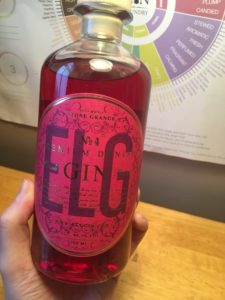Note: I met the lovely team behind Gŵyr gin at Junipalooza and they kindly sent me a bottle to try, as always I’ll let you know what I think.
 Gŵyr gin (pronounced Gower for us non-Welsh language speakers) hails from South Wales. They keep the recipe fairly simple and use only eight botanicals – juniper meets lemon and pink grapefruit balanced with bronze and green fennel. They aim to “capture the freshness of the sea” – a theme which carries through to their branding and distinctive navy-inspired label. As they are based just outside of Swansea, the hints of copper on the label hark back to the 18th and 19th century when Swansea was famous for its copper industry.
Gŵyr gin (pronounced Gower for us non-Welsh language speakers) hails from South Wales. They keep the recipe fairly simple and use only eight botanicals – juniper meets lemon and pink grapefruit balanced with bronze and green fennel. They aim to “capture the freshness of the sea” – a theme which carries through to their branding and distinctive navy-inspired label. As they are based just outside of Swansea, the hints of copper on the label hark back to the 18th and 19th century when Swansea was famous for its copper industry.








